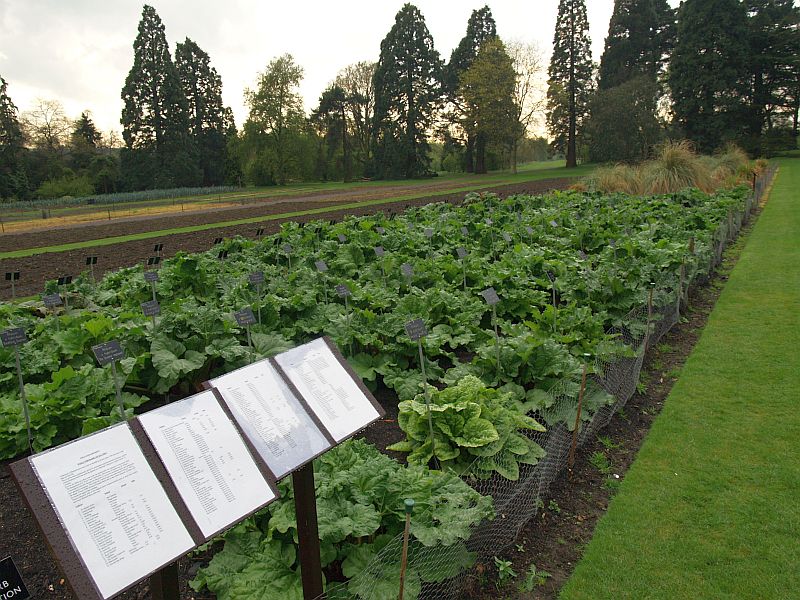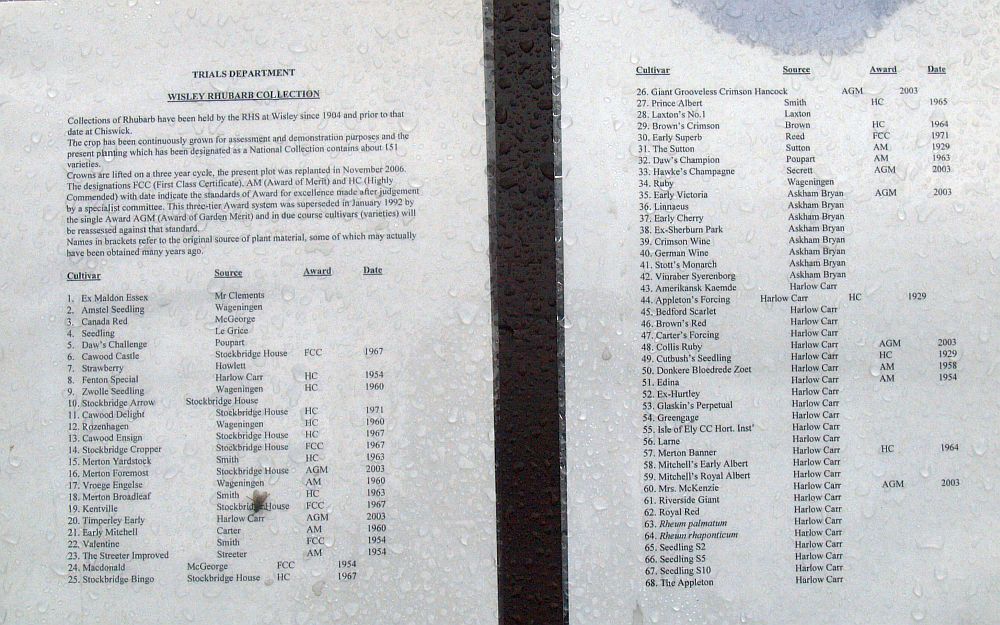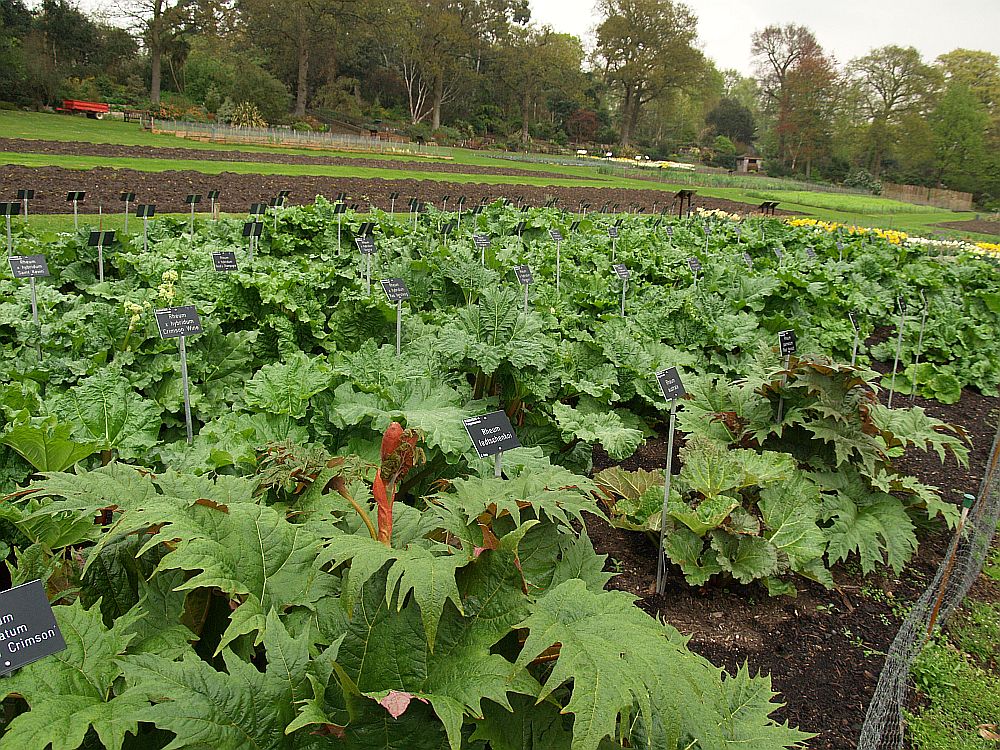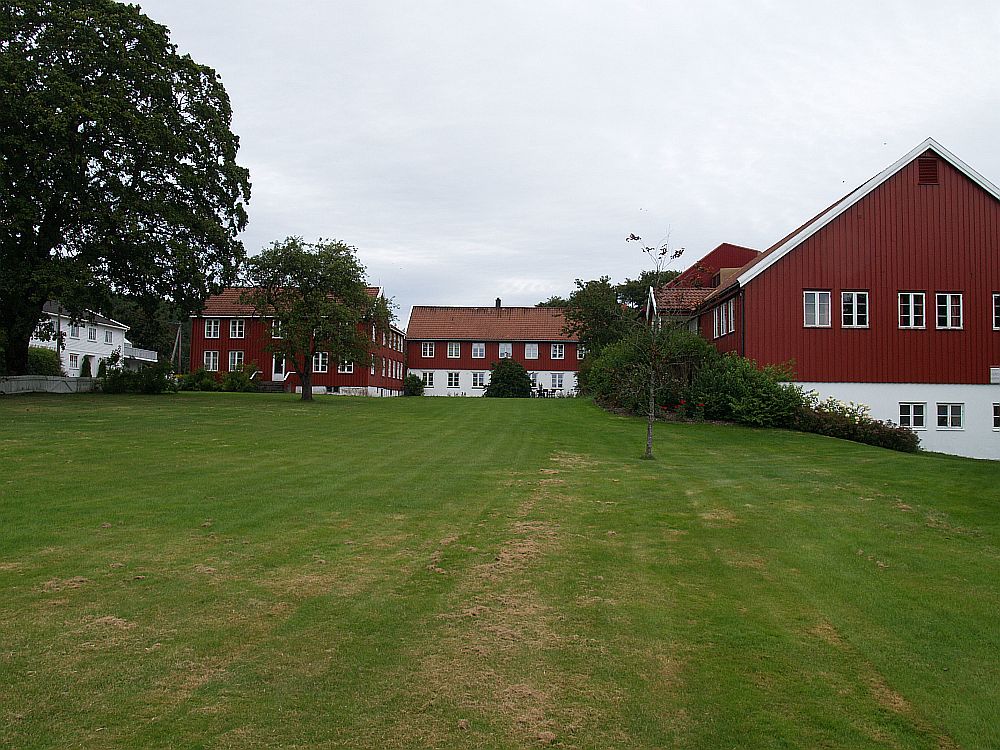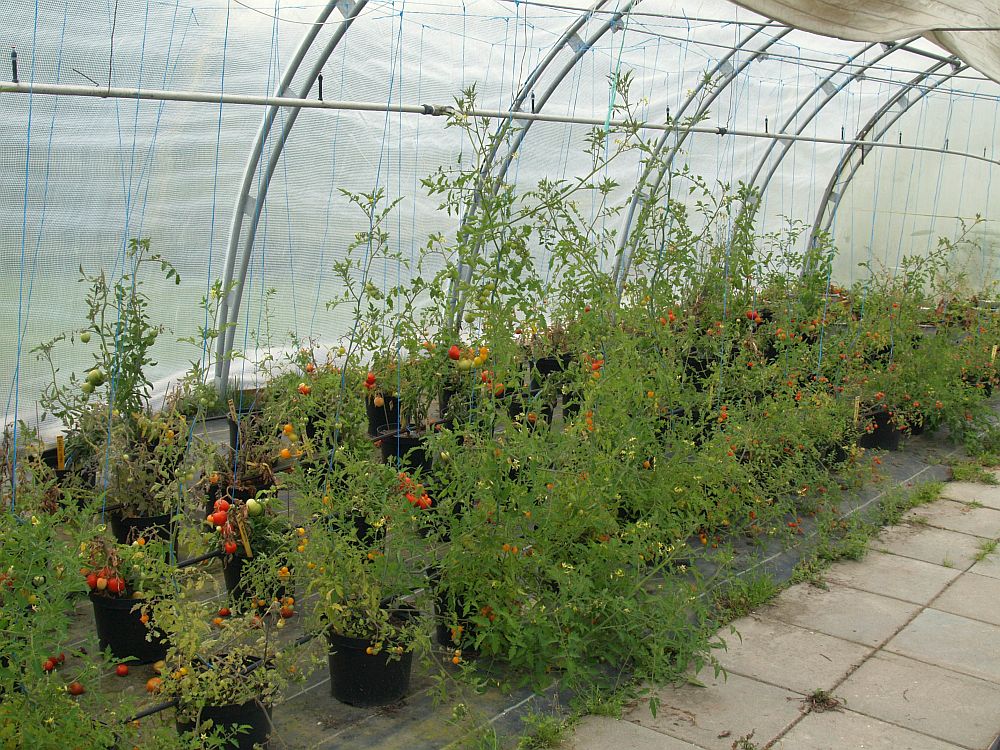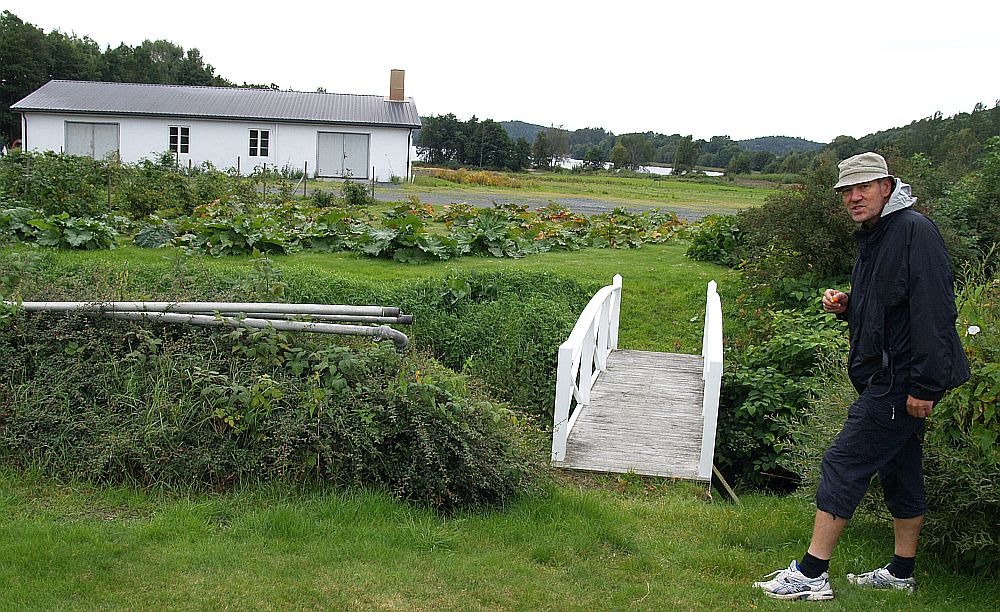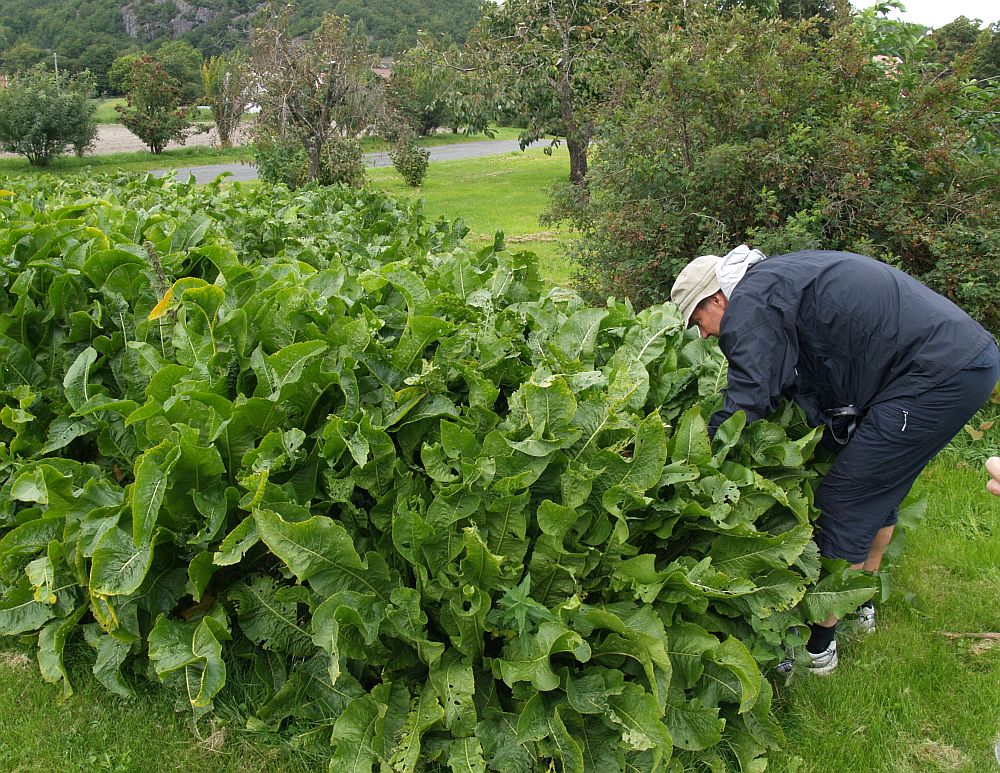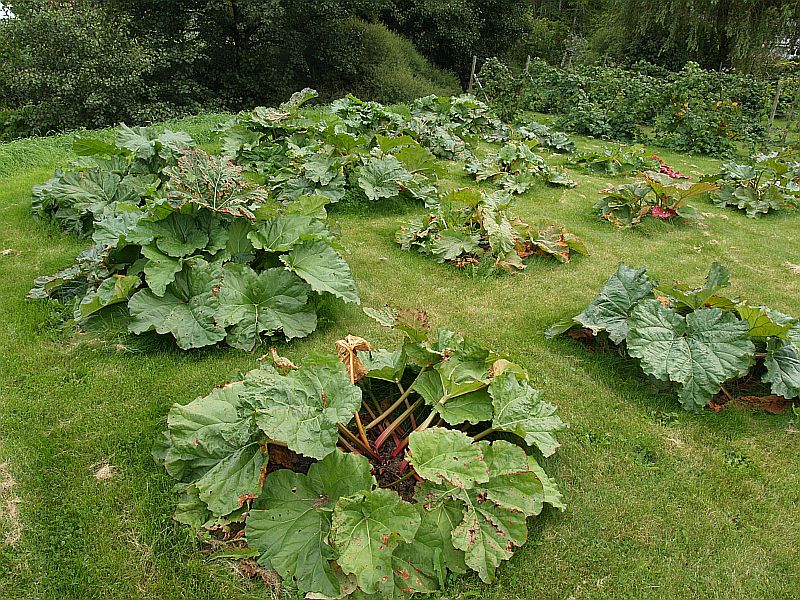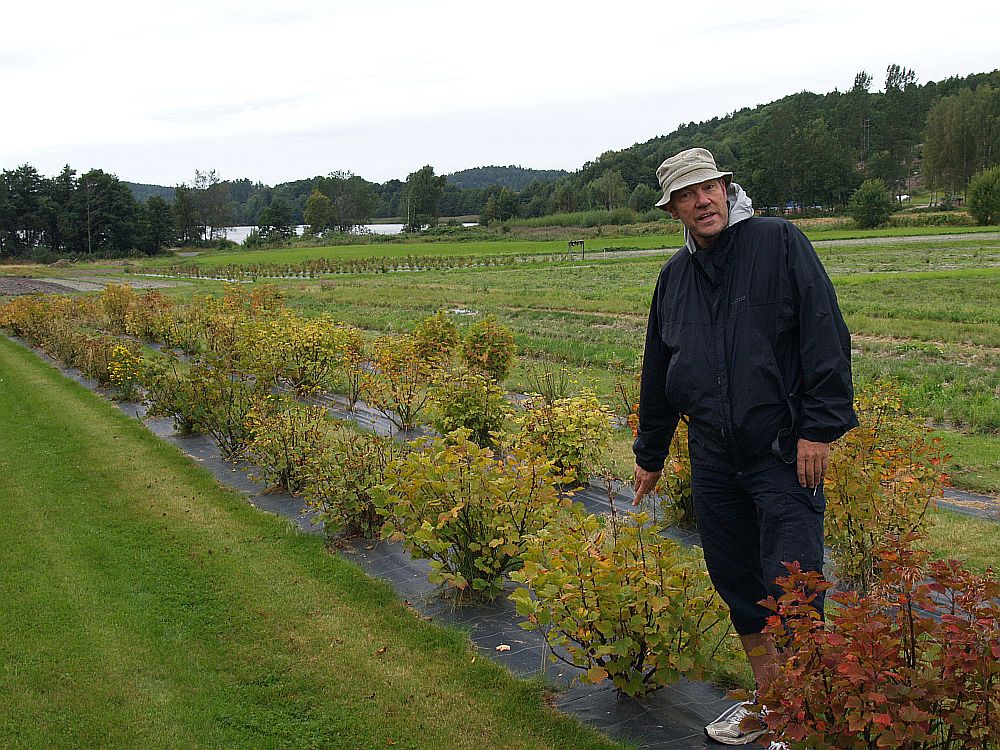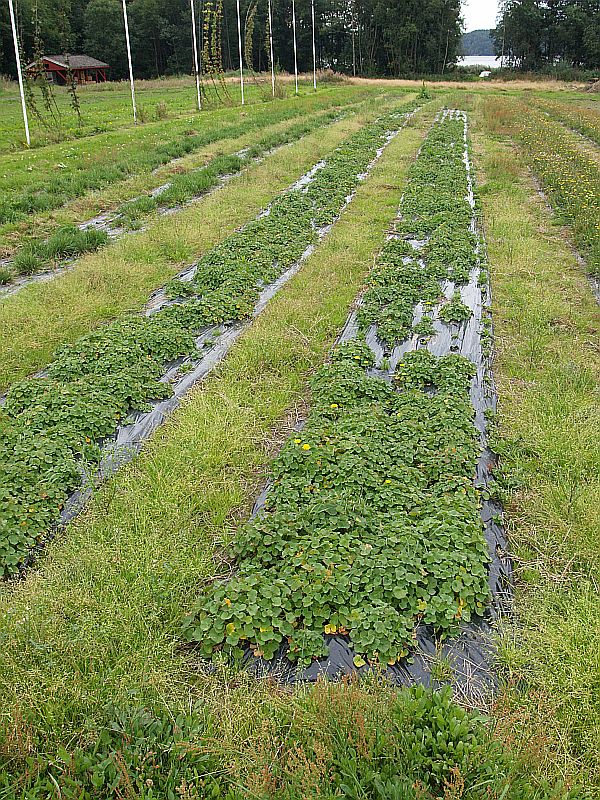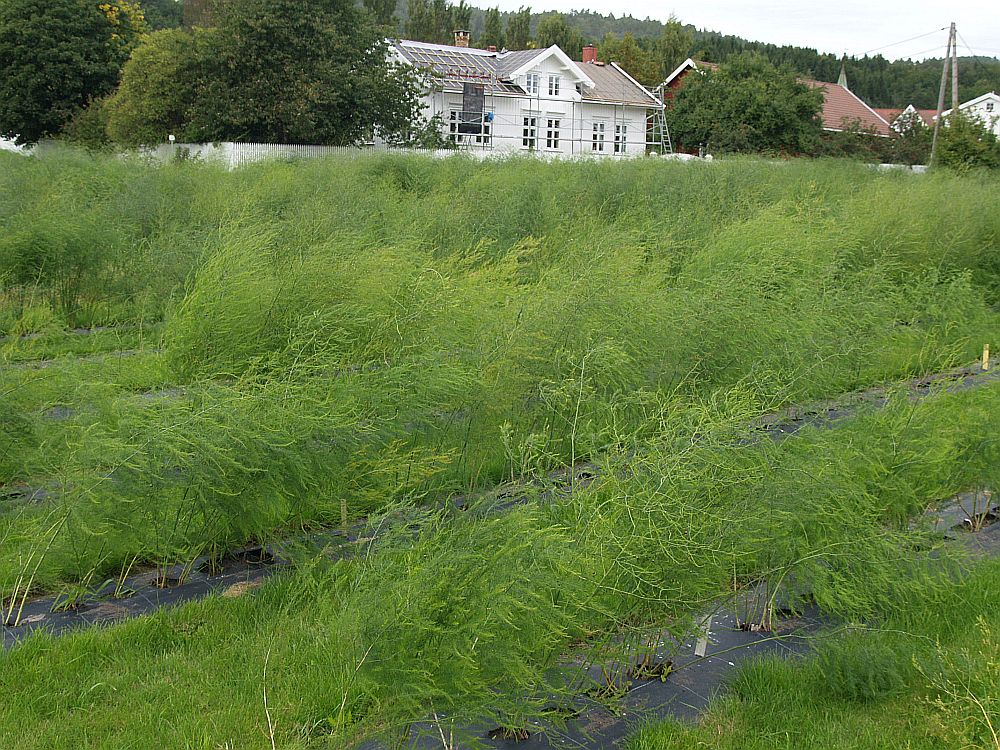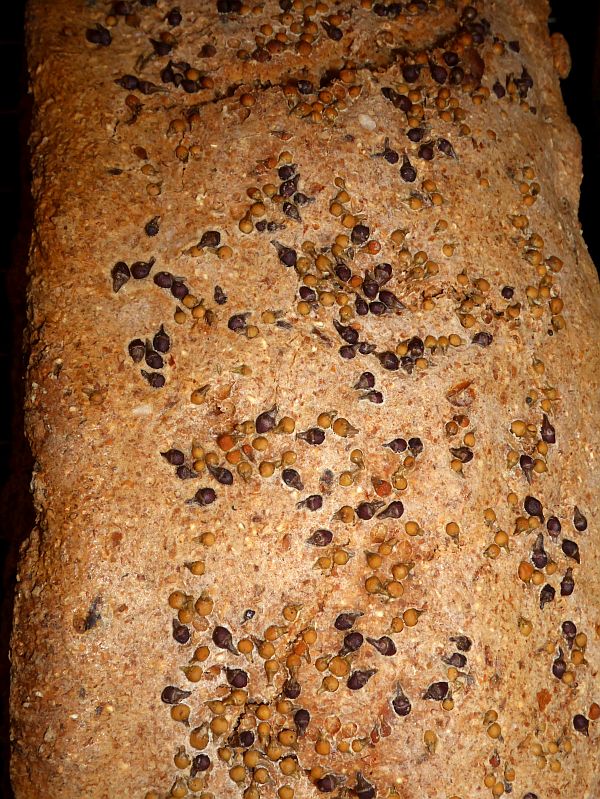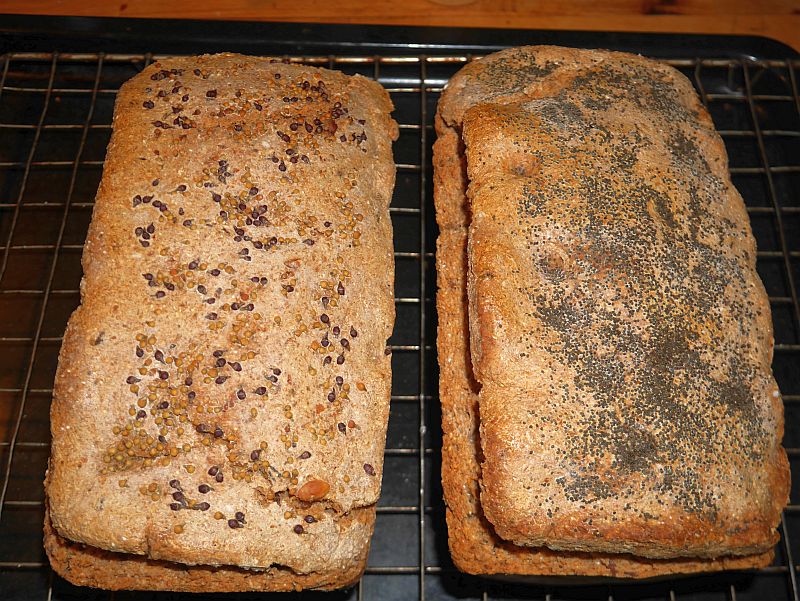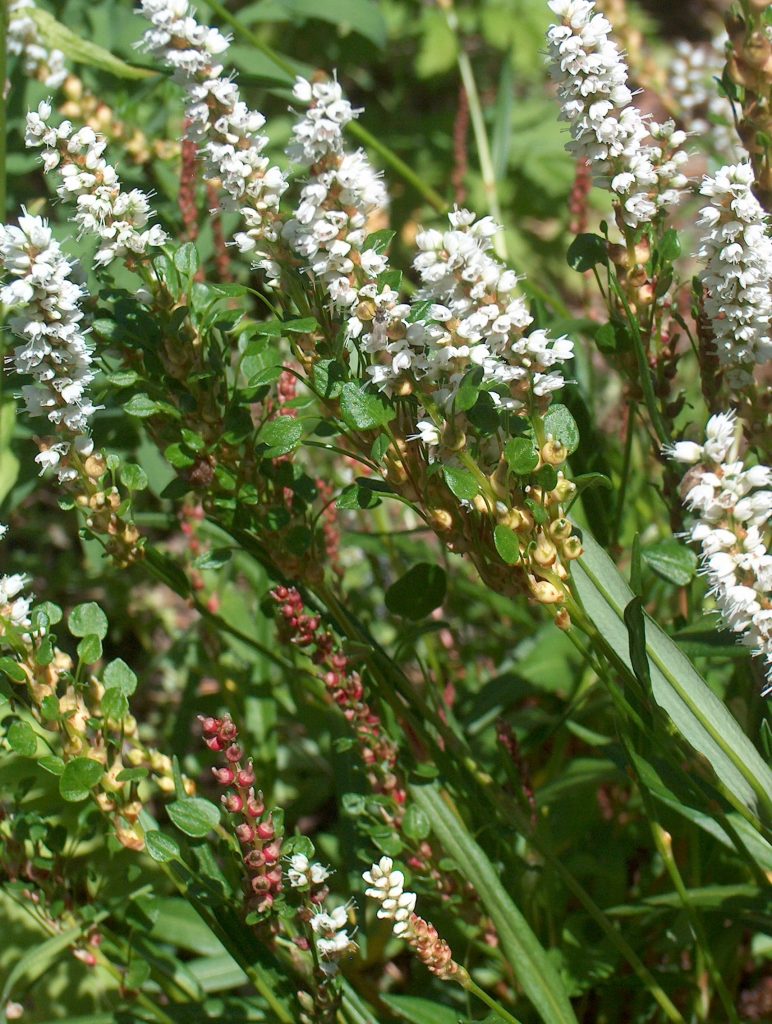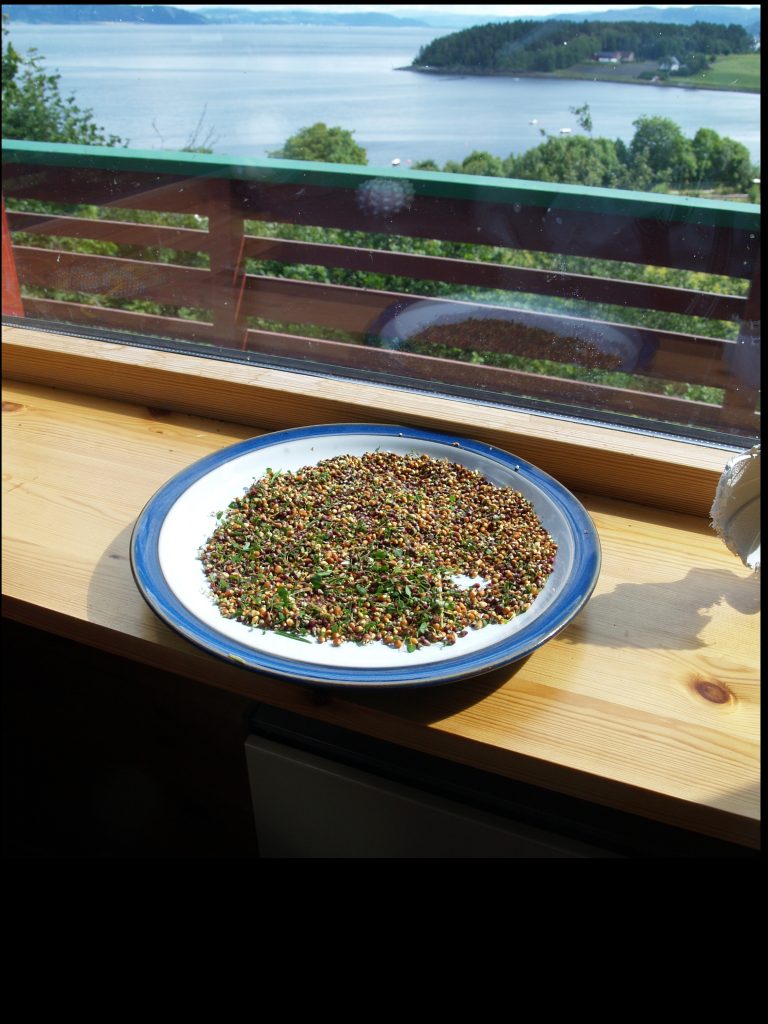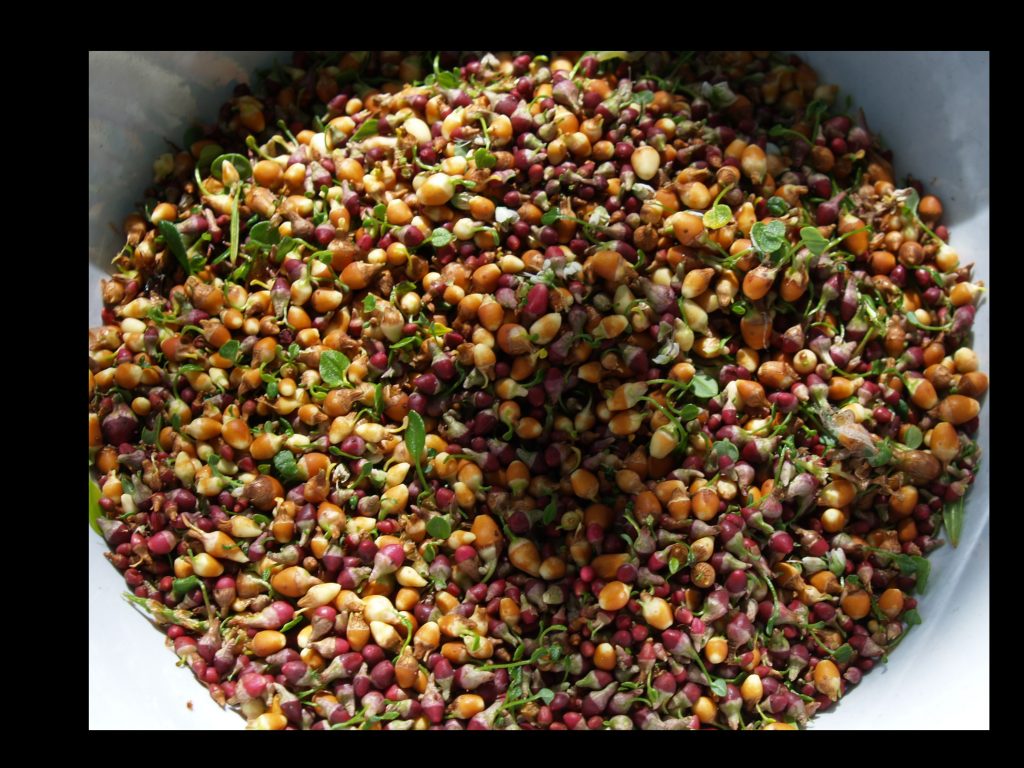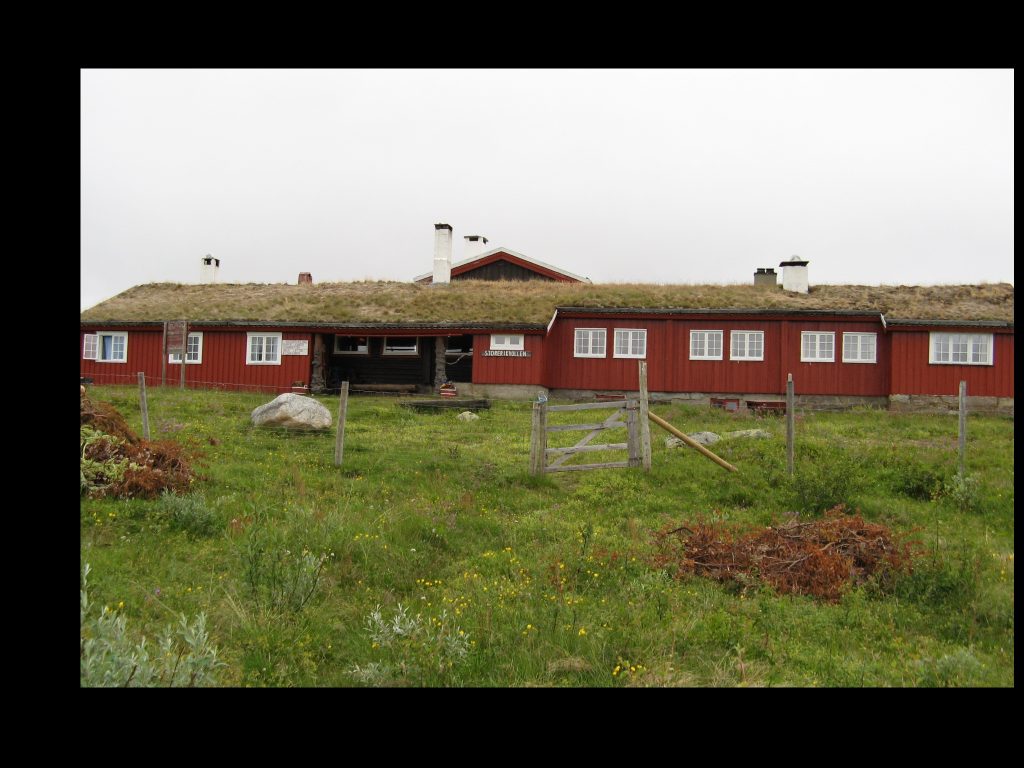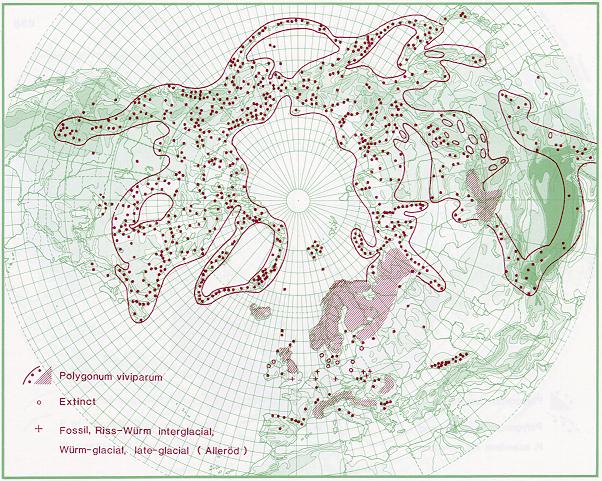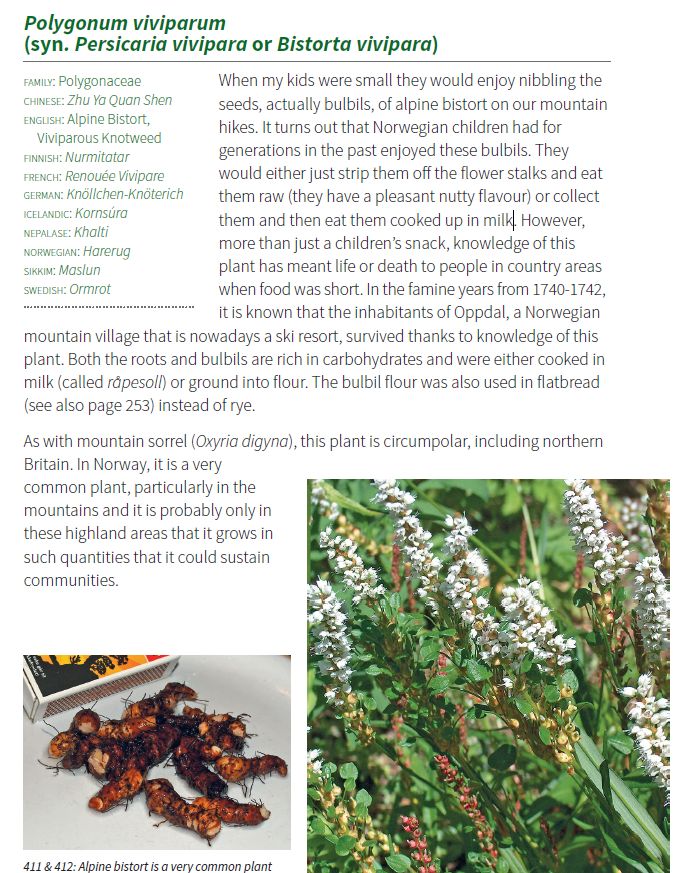Some pictures of RHS Wisley’s National Rhubarb collection in mid-April 2009. It comprised some 151 plants including a few “ornamental” rhubarbs as well as species.
You will find more about using rhubarb as a perennial vegetable in my book Around the World in 80 plants!
Tag Archives: rhubarb
Visit to Bioforsk Landvik in 2012
Norwegian: I september 2012 besøkte jeg Grimstad for å snakke om min bok Around the World in 80 plants som snart skulle se dagens lys! Jeg holdt et foredrag for Grimstad bys museum og Aust-Agder sopp- og nyttevekstforening. Jeg ble også invitert til Bioforsk Landvik hvor Åsmund Asdal fra genressursenteret hadde et kontor. Jeg hadde samarbeidet med Åsmund over flere år som leder av Planteklubben for Grønnsaker (Norwegian Seed Savers). Jeg ga en kort foredrag for staben etterfulgt av en tur på forsøksarealene for å se førstehånd flere av klonsamlingene som Planteklubben mottok materiale fra hvert år!
English: In September 2012, I visited Grimstad in the south of Norway to give a talk about my soon to be published book Around the World in 80 plants to Grimstad bys museer and Aust-Agder sopp- og nyttevekstforening (the museum and local group of the Norwegian Useful Plants Society). I was also invited to nearby Bioforsk Landvik where Åsmund Asdal of the Norwegian Genetic Resource Centre had an office. I had collaborated with Åsmund over a number of years as leader of Norwegian Seed Savers (Planteklubben for Grønnsaker). I gave a short afternoon talk to the staff followed by a tour of the grounds to see first hand several of the clonal collections that Planteklubben received material from each year!
Harerug bread
Harerug? Literally meaning “Hare rye” is a plant found in Norway from the outermost coast to the high mountains and is also one of the few edible plants of Svalbard in the high arctic! It’s Polygonum viviparum (Persicaria vivipara) or alpine bistort in English, in the Knotweed family or Polygonaceae along with many other edible plants such as giant rhubarb and Japanese knotweed and the sorrels and docks. Despite its small size, it has been an important survival food for arctic peoples including in some Norwegian mountain villages in the past as plants have comparatively large nutritious and tasty tubers! I’ve been using the bulbils (hence the latin viviparum meaning living birth as these fall off and form roots giving plants that are genetically identical to the mother plant). They have a delicious nutty taste, something my kids loved as a trail snack in the mountains. Indeed this is a plant one should learn if one is in the mountains as in the event of getting lost, one will still be able to find food. It is a particularly common plant above the tree line here!
It’s also circumpolar as the map in the album shows, even found in the alps and Himalayas. I have a number of different forms in my garden and there are also closely related species which are larger that I believe could have an even bigger potential as a cultivated mountain / arctic crop. There’s a robust subspecies in North America I’d love to get hold of…(Flora of North America: “… with large leaves, compact spikes, and persistent bulblets…. named subsp. macounii”). It’s also one of the 80 in my book Around the World in 80 plants!

